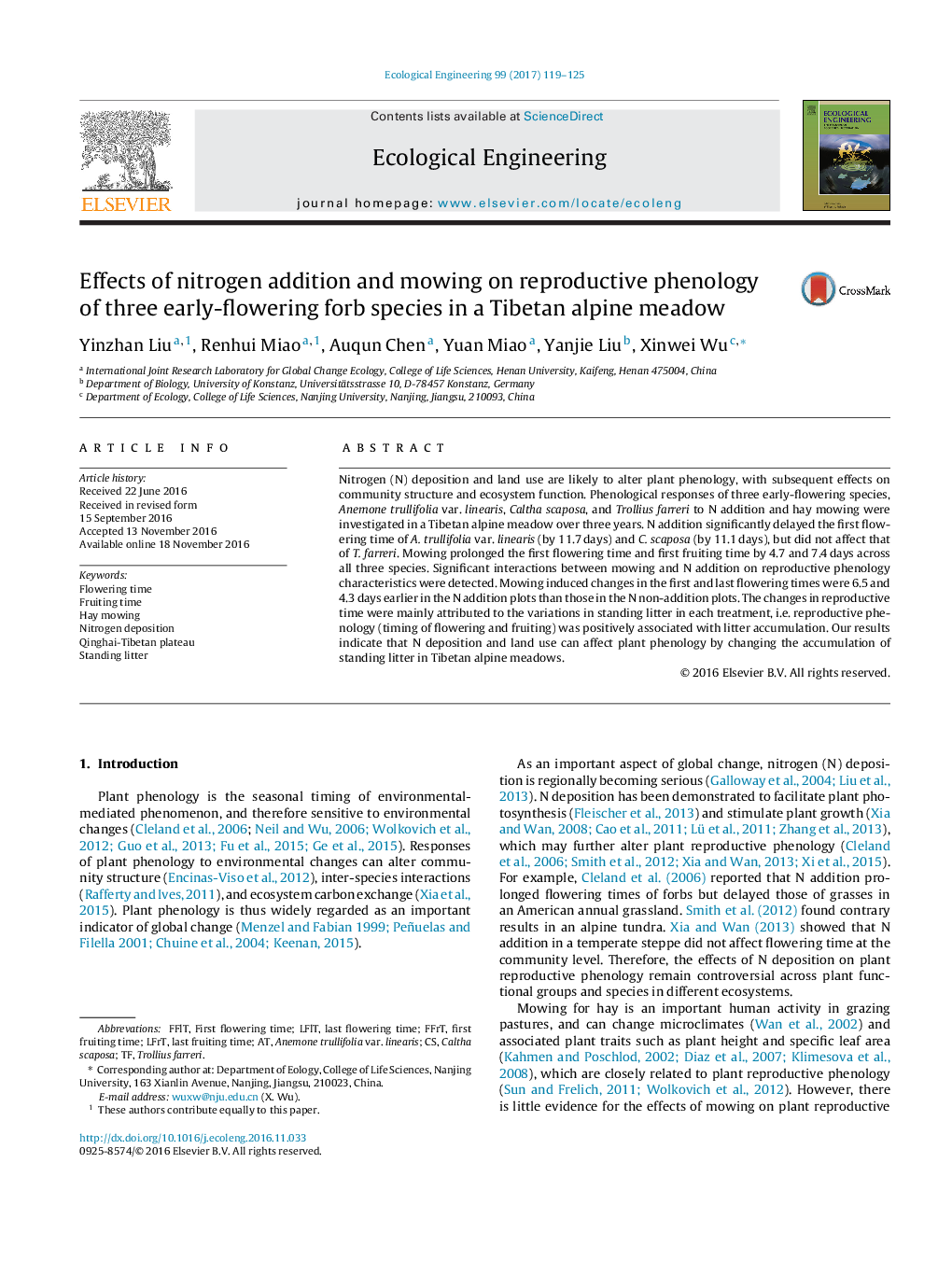| Article ID | Journal | Published Year | Pages | File Type |
|---|---|---|---|---|
| 5743977 | Ecological Engineering | 2017 | 7 Pages |
â¢Nitrogen slightly delayed flowering time of the early-flowering species.â¢Mowing advanced the reproductive phenology of the early-flowering species.â¢Nitrogen addition and mowing interacted to affect reproductive plant phenology.â¢Standing litter mediated the responses of reproductive phenology to nitrogen addition and mowing.
Nitrogen (N) deposition and land use are likely to alter plant phenology, with subsequent effects on community structure and ecosystem function. Phenological responses of three early-flowering species, Anemone trullifolia var. linearis, Caltha scaposa, and Trollius farreri to N addition and hay mowing were investigated in a Tibetan alpine meadow over three years. N addition significantly delayed the first flowering time of A. trullifolia var. linearis (by 11.7Â days) and C. scaposa (by 11.1Â days), but did not affect that of T. farreri. Mowing prolonged the first flowering time and first fruiting time by 4.7 and 7.4Â days across all three species. Significant interactions between mowing and N addition on reproductive phenology characteristics were detected. Mowing induced changes in the first and last flowering times were 6.5 and 4.3Â days earlier in the N addition plots than those in the N non-addition plots. The changes in reproductive time were mainly attributed to the variations in standing litter in each treatment, i.e. reproductive phenology (timing of flowering and fruiting) was positively associated with litter accumulation. Our results indicate that N deposition and land use can affect plant phenology by changing the accumulation of standing litter in Tibetan alpine meadows.
